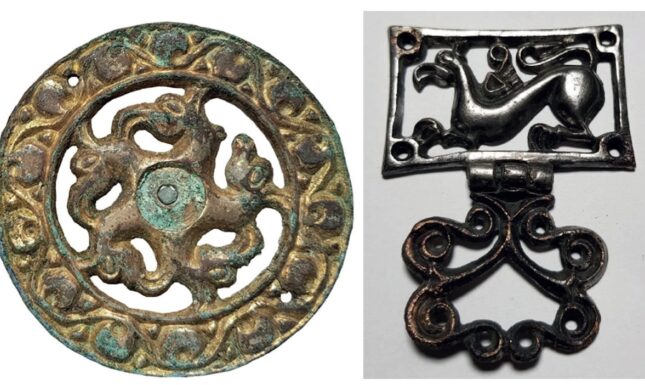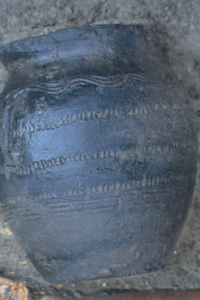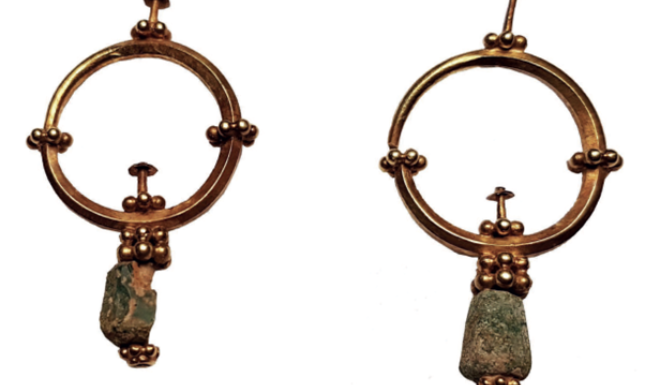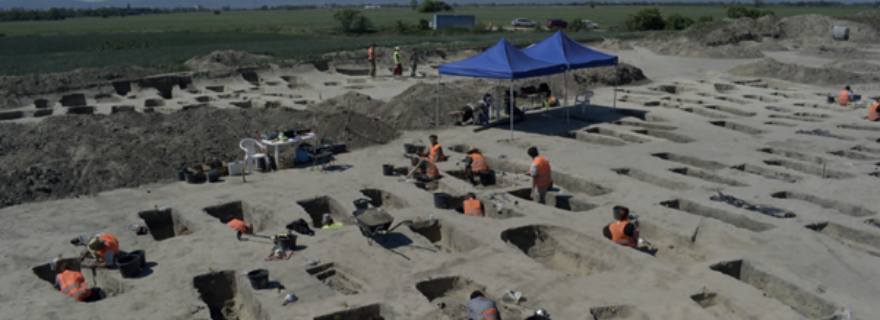Avars on the Edge of History: New Discoveries from Poddunajské Biskupice
The nomadic invaders known as the Avars dominated much of Eastern and Central Europe between the 6th and 9th centuries. A recently excavated Avar cemetery at Poddunajské Biskupice, Slovakia, sheds new light on the final chapter of Avar rule in the Pannonian Basin.
As is often the case in Europe, large-scale infrastructure projects have prompted archaeological rescue excavations. Sites located along the path of development must be documented before they are lost forever. In this way, highway construction (D4/R7) has provided an unexpected opportunity to uncover countless sites of great historical value. The discovery at Poddunajské Biskupice is one such case.

Historical Background – Who Were the Avars?
The people referred to as “Avars” in European sources likely originated on the vast Eurasian steppe (Maróti et al., 2022). Their arrival in eastern Europe during the second half of the 6th century was recorded by Byzantine chroniclers (Pohl 1998, p. 18). Although they initially appeared as mercenaries and raiders, by around AD 600 they had established control over the Carpathian Basin—today encompassing southern Slovakia, Hungary, and eastern Austria—where they ruled over Slavs and other local groups (Kardaras, 2019, pp. 16–19). Avar supremacy came to an end in the early 9th century after repeated Frankish campaigns (Pohl 2018, pp. 378–379).
What the Avars Left Behind
Archaeology has so far documented more than 60,000 graves and numerous settlements from the Avar period. Early Avar identity is most clearly marked by horse-related equipment such as stirrups, while in later centuries ornate belt buckles decorated with griffins and other mythical creatures became their signature artifact (Daim, 2003, pp. 464-480).

The buried of Poddunajské Biskupice
In 2017, during the early phases of highway construction near Podunajské Biskupice—just 15 km southeast of Bratislava—a vast Avar cemetery was uncovered. The excavation, conducted by VIA MAGNA (later AA AVALA), has so far identified 630 potential graves, 551 of which have been excavated. representing only about half of the site’s full extent.

Most graves contained a single individual, though archaeologists also uncovered five adult–child burials, one double burial of a couple of males and eight graves in which buried horses accompanied the deceased. A single grave containing four skeletons and one double-child grave have been also excavated. More than a half of the grave shafts appear to have been reinforced with wooden beams and planks. The vast majority of the buried have been interred on their backs, in north-west - south-east direction.
Grave goods were common. Most individuals were buried with a ceramic vessel and animal remains—probably food offerings. Other frequent finds included metal fittings from buckets, tools, knives, and jewelry. Horses were interred with their harnesses and stirrups (Horáková, pp. 4–7). Surprisingly, weapons—so prominent in earlier Avar cemeteries (Daim, 2003) —were absent.


The buried men’s tales
The absence of weapons raises intriguing questions. Were they deliberately withheld because the living needed every available weapon during the intensified Frankish campaigns of the late 8th century?
The artifacts that do appear reveal a cultural crossroads. Much of the pottery shows Slavic design, although some vessels are hybrids of Slavic and Avar pottery styles. Jewelry, usually belt buckles and earrings, often carry the steppe motifs of griffins. However, some pieces have been apparently inspired by Byzantine production. Finds also include a few Byzantine coins and a finely crafted gilded fibula—a piece for securing a cloak. This diversity and hybridisation of styles point to a culturally diverse and complex environment.

Among the most remarkable discoveries is a coin bearing the name of Charlemagne. Only a few such coins are known. How did one travel as far as southern Slovakia? Early medieval chroniclers mention an Avar commander sent on a diplomatic mission to Charlemagne’s court. The coin could be evidence of such contact, though other explanations—trade, raiding, or indirect exchange—remain possible.
The grave goods—probably offered to the dead to serve him after death—point to some kind of a belief in the afterlife, although the details are impossible to reconstruct.
Some individuals significantly deviate from the usual burial rite. The body of a single individual was buried in an opposite orientation to the rest of the cemetery. It was found with much jewelry but without any other grave goods so typical for the cemetery. Noteworthy is also a female grave including an entire horse skeleton, although horses are usually associated with male burials. What is the significance of deviations like these? Are they a testimony to diverse beliefs appearing in early medieval society?

The material from Poddunajské Biskupice reflects the ethnic and cultural diversity of the Avar realm, a frontier where steppe traditions met the Byzantine, Slavic and Frankish worlds. The graves and their contents testify to a period that was highly connected, dynamic, and complex. The burials from Poddunajské Biskupice reveal a rich, Avaro-Slavic culture dating to the conclusion of the Avar rule in the region.
The Tale Continues?
Because the excavation was carried out under rescue conditions, the finds and human remains have so far undergone only preliminary study. Compilation of a comprehensive catalogue of the artifacts and further anthropological studies will soon add to the existing body of research. Such works could significantly deepen our understanding of the early medieval period in this region. Promising avenues for future research include ancient DNA analysis and isotope studies, which may help reconstruct questions of mobility, identity, and cultural interaction.
This report is not only a presentation of the site but also an invitation. We warmly encourage scholars interested in the archaeology of the early Middle Ages to collaborate with us in investigating the lives and identities of the people buried at Poddunajské Biskupice.
References
- Goetz, H.-W., Jarnut, J., & Pohl, W. (2002). Regna and gentes: The relationship between late antique and early medieval peoples and kingdoms in the transformation of the Roman world (1st ed.). Brill.
- Horáková, L. (2023). Pohrebný rítus na pohrebisku z obdobia avarského kaganátu v Podunajských Biskupiciach [MA Thesis]. Palacký University Olomouc.
- Kardaras, G. T. (2019). Byzantium and the Avars, 6th-9th Century AD: Political, Diplomatic and Cultural Relations. Brill.
- Maróti, Z., Neparáczki, E., Schütz, O., Maár, K., Varga, G. I., Kovács, B., Kalmár, T., Nyerki, E., Nagy, I., Latinovics, D., Tihanyi, B., Marcsik, A., Pálfi, G., Bernert, Z., Gallina, Z., Horváth, C., Varga, S., Költő, L., Raskó, I., … Török, T. (2022). The genetic origin of Huns, Avars, and conquering Hungarians. Current Biology, 32(13), 2858-2870.e7. https://doi.org/10.1016/j.cub.2022.04.093
- Pohl, W. (2018). The Avars: A Steppe Empire in Central Europe, 567–822. Cornell University Press.
- Pohl, W., & Reimitz, H. (Eds.). (1998). Strategies of Distinction : The Construction of Ethnic Communities, 300-800 (First edition.). Koninklijke Brill.


